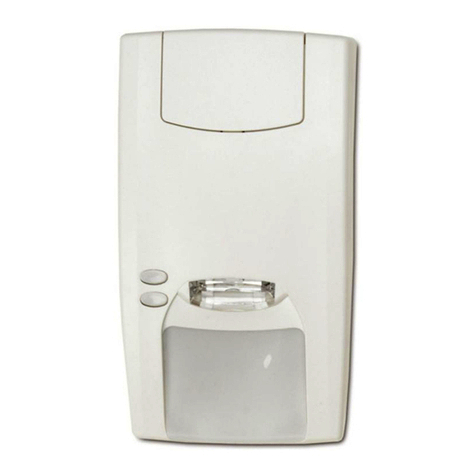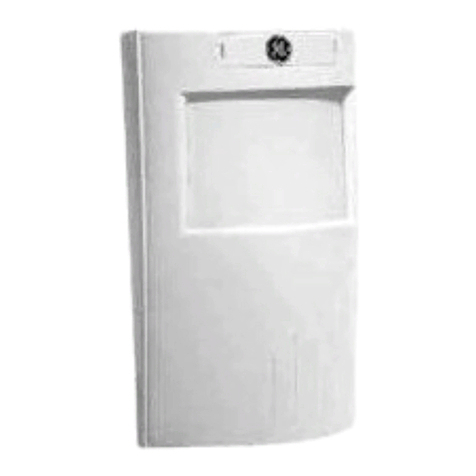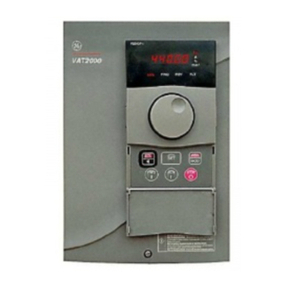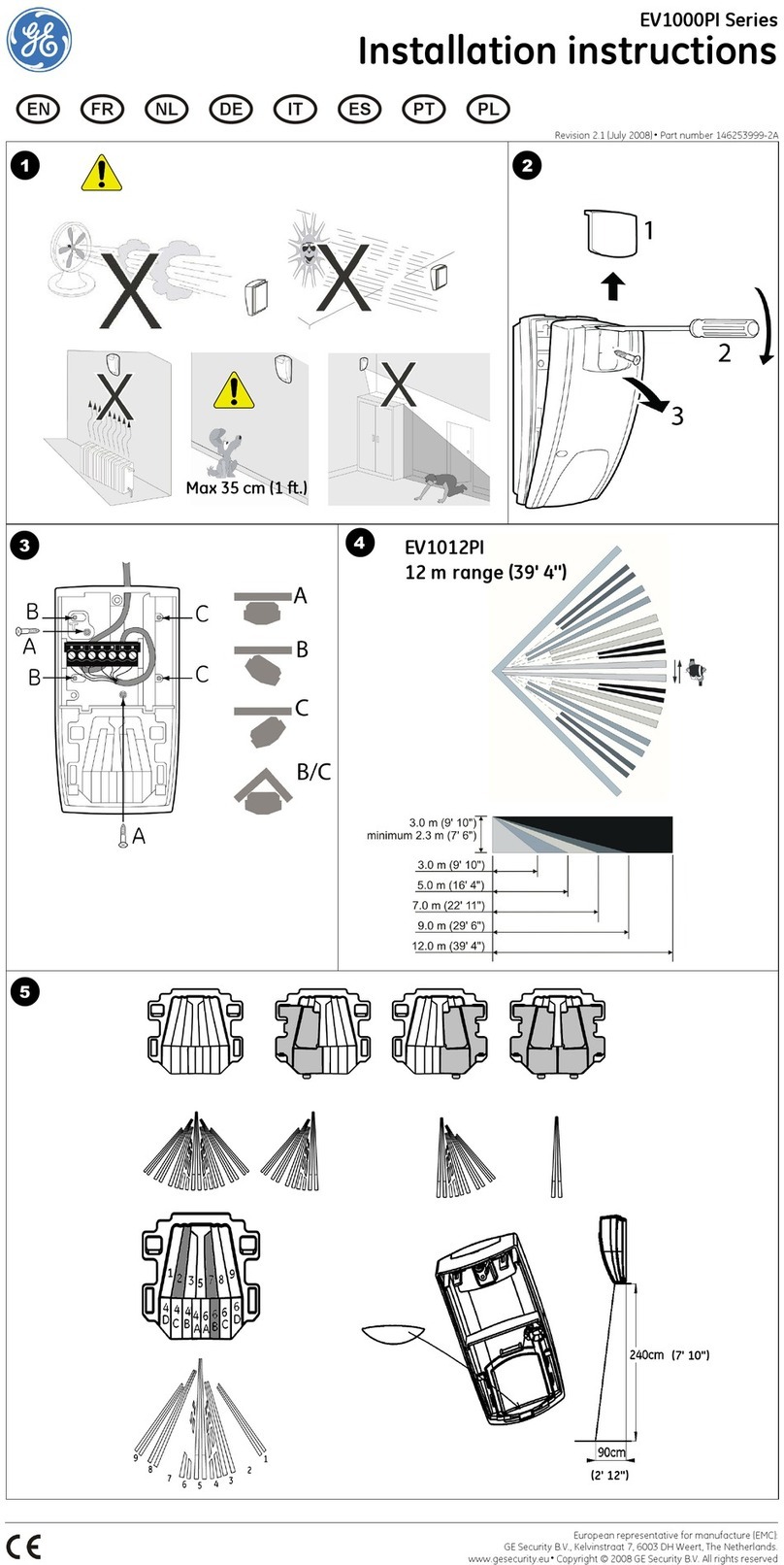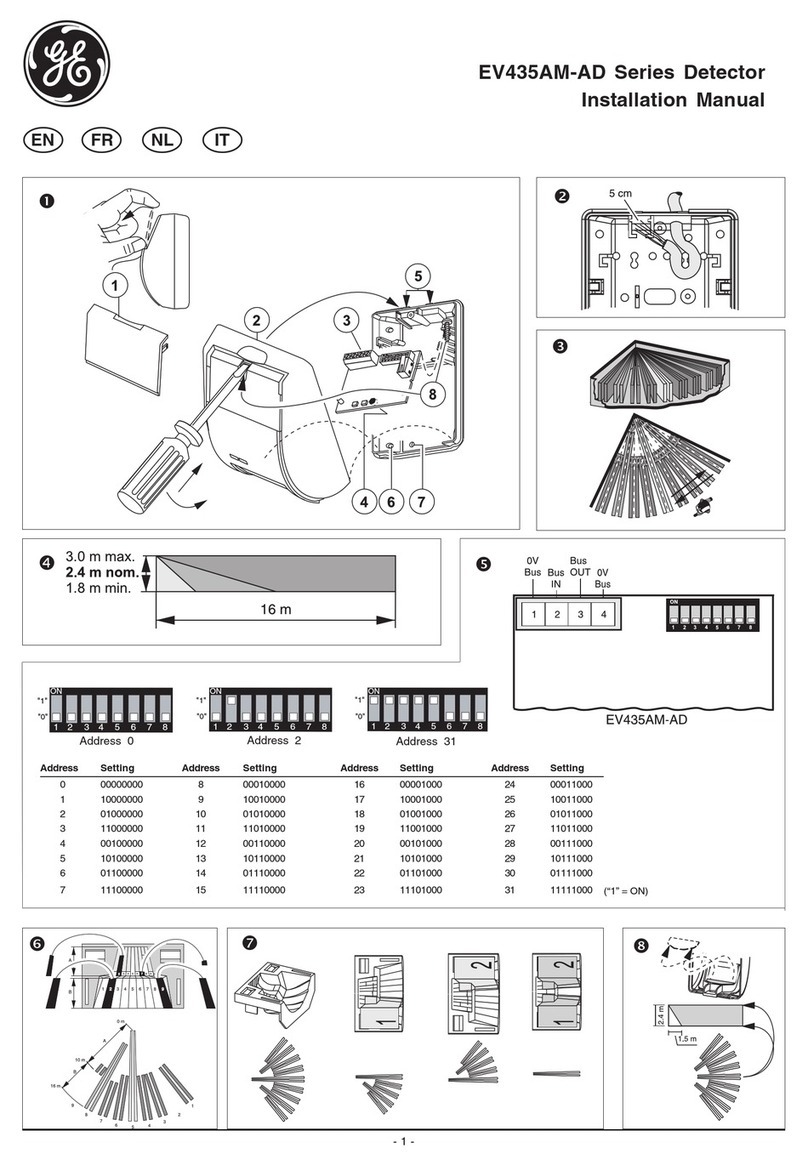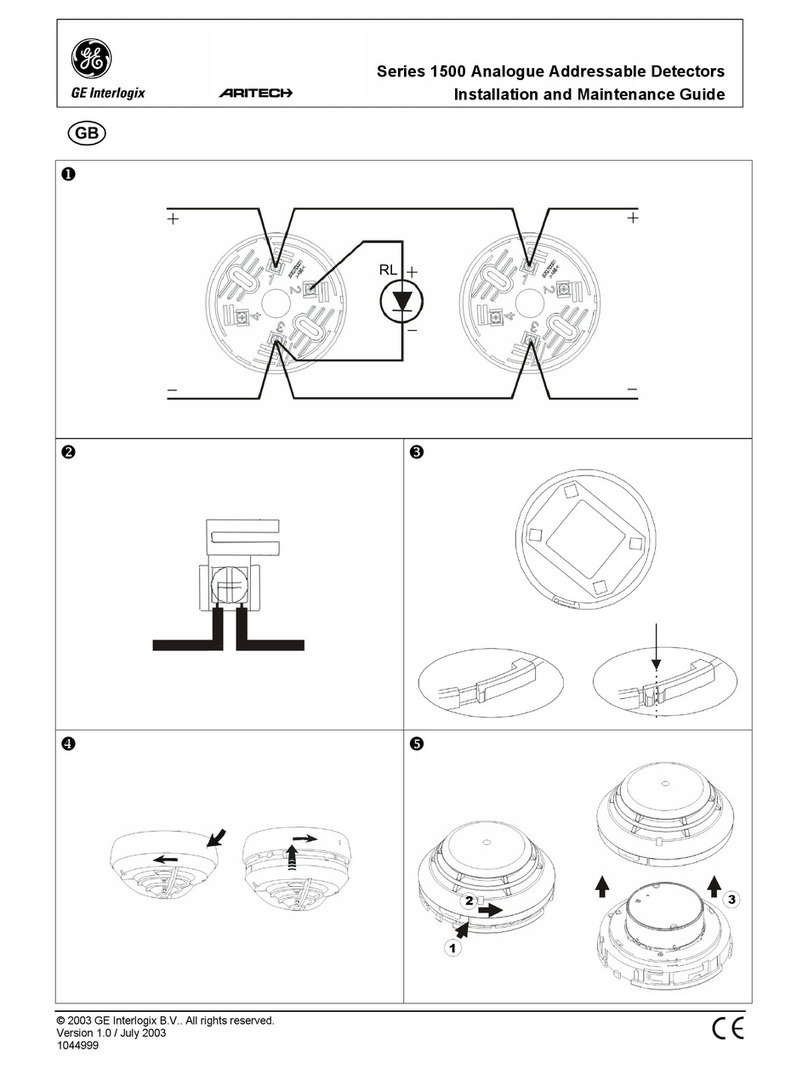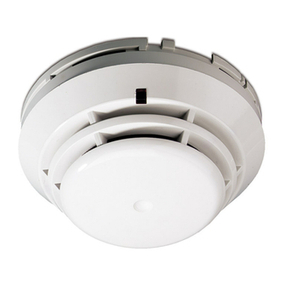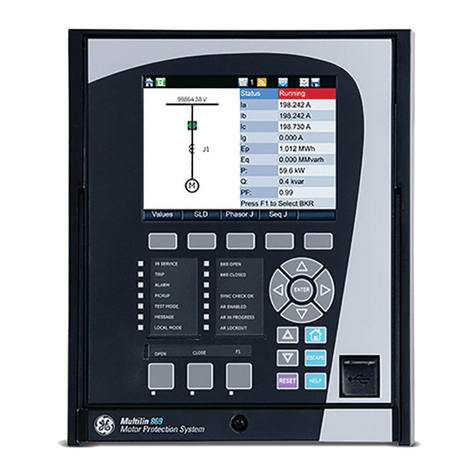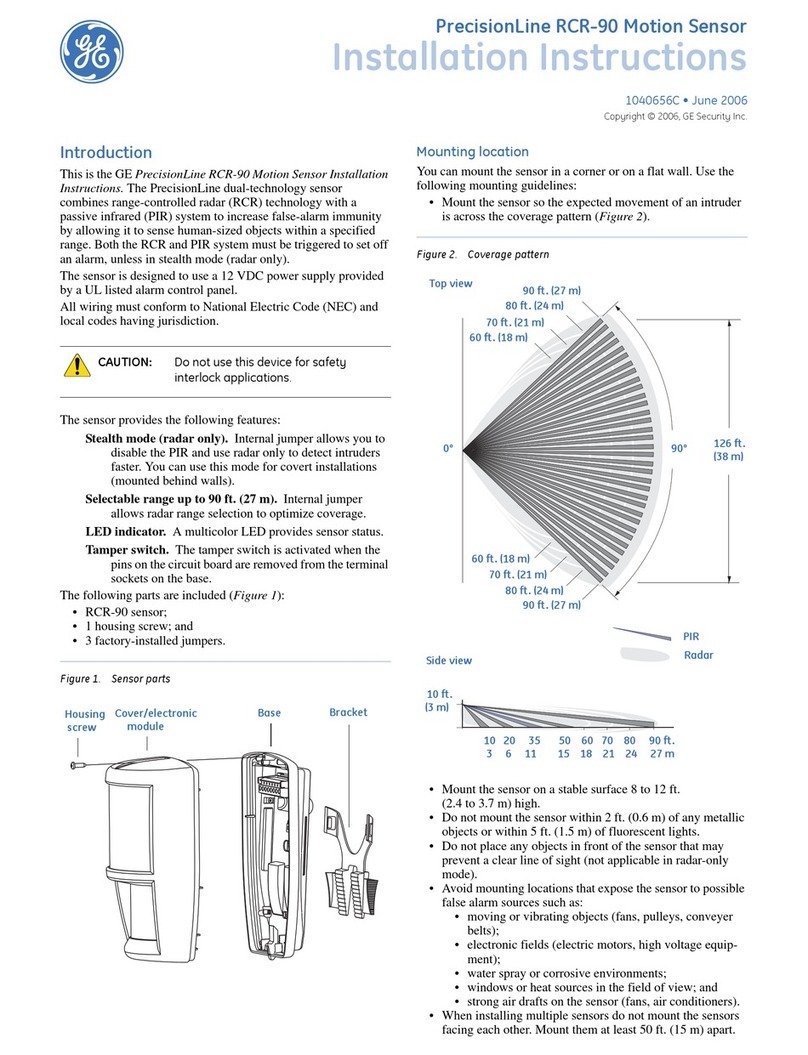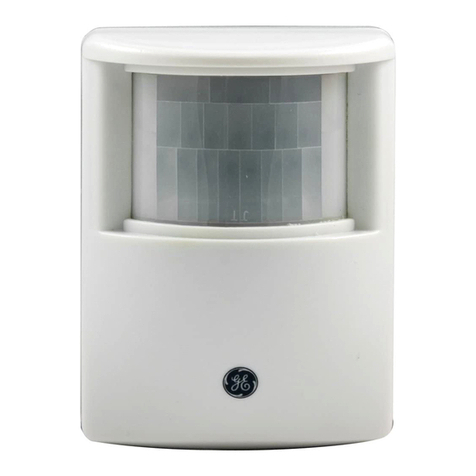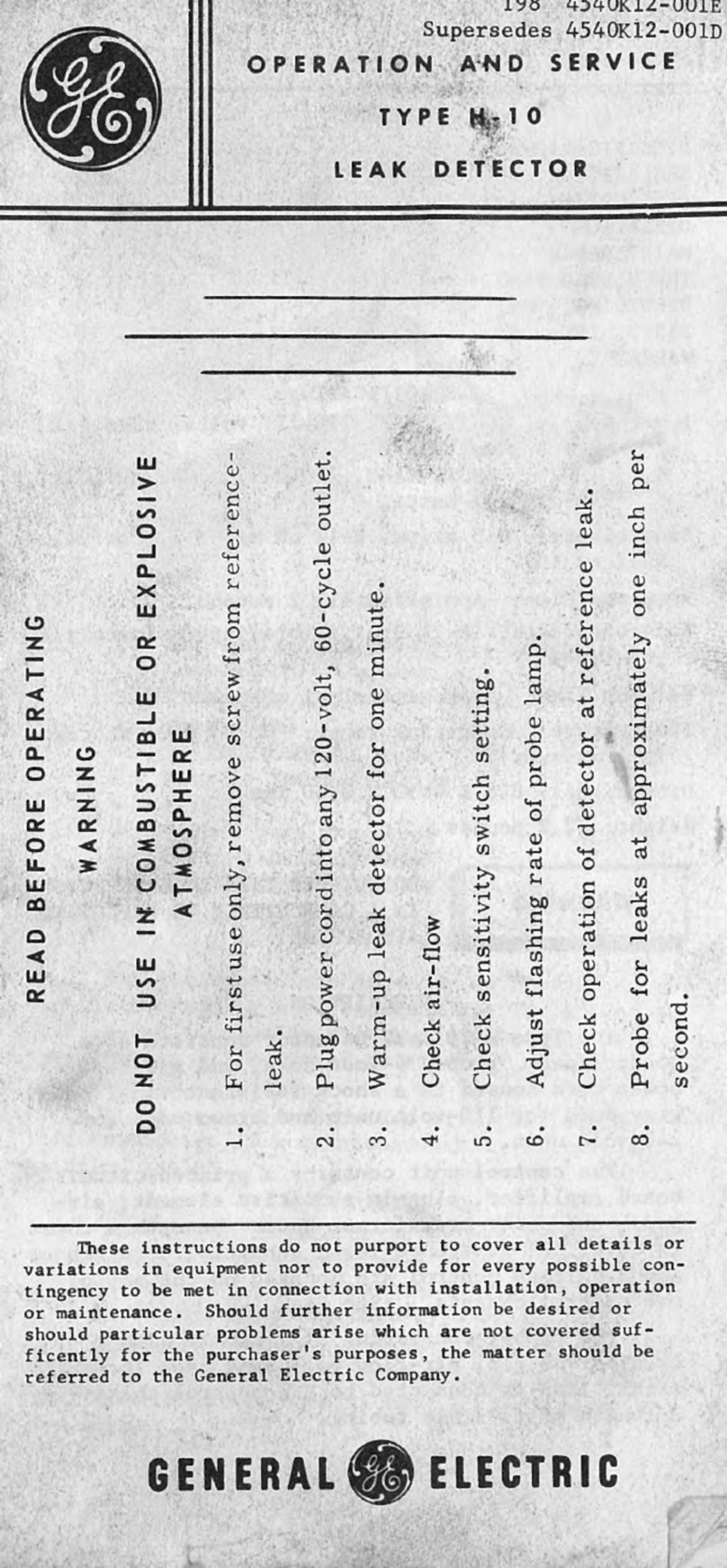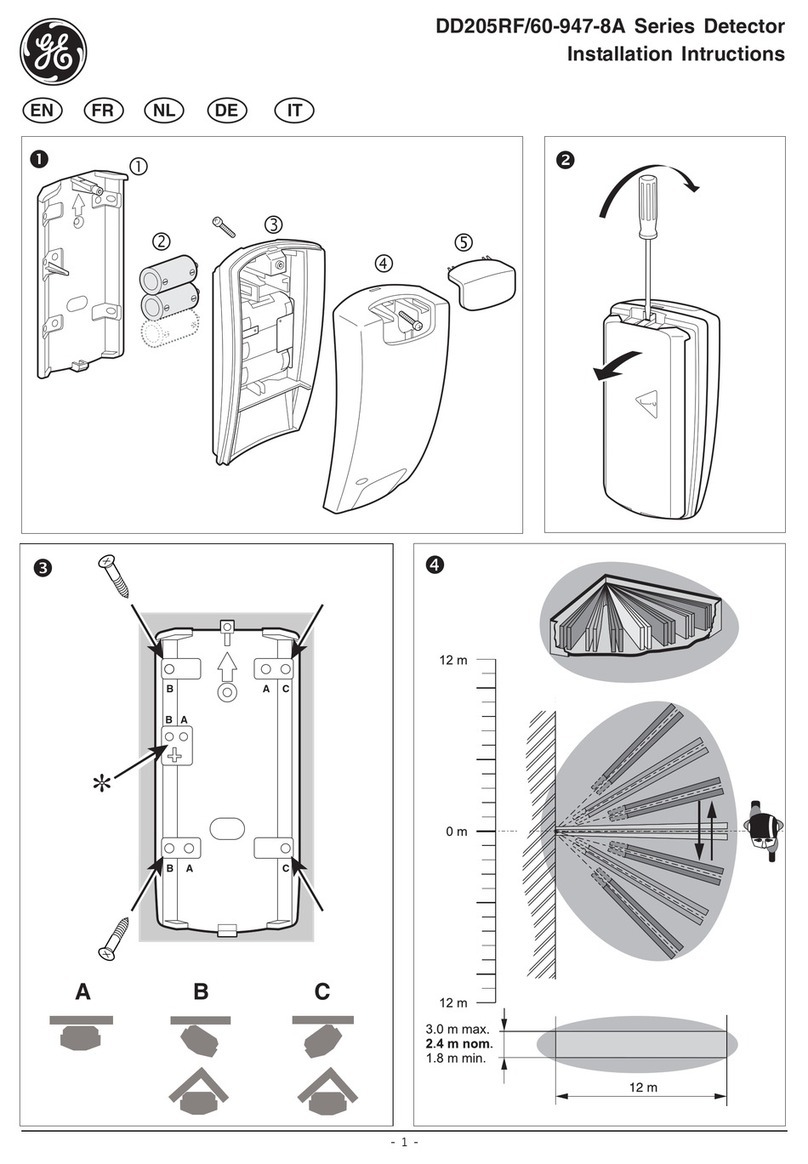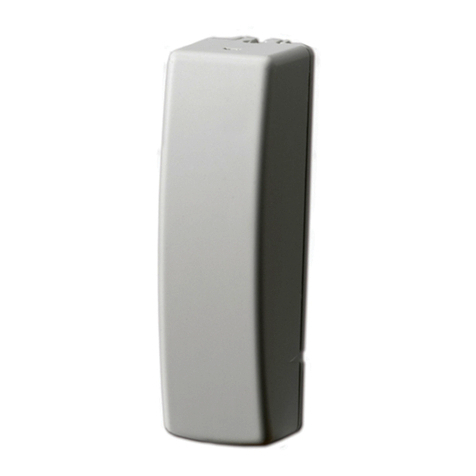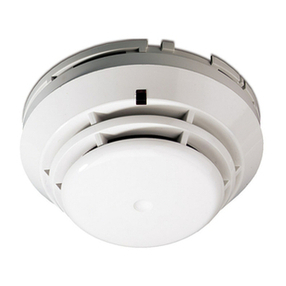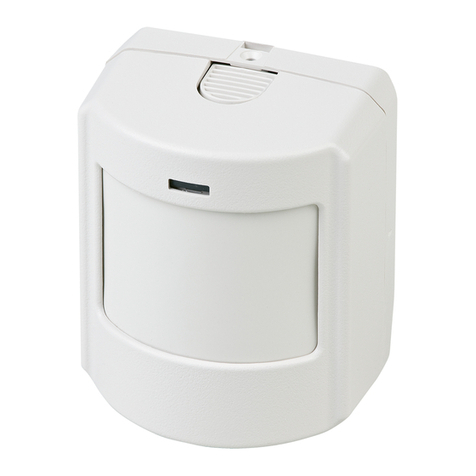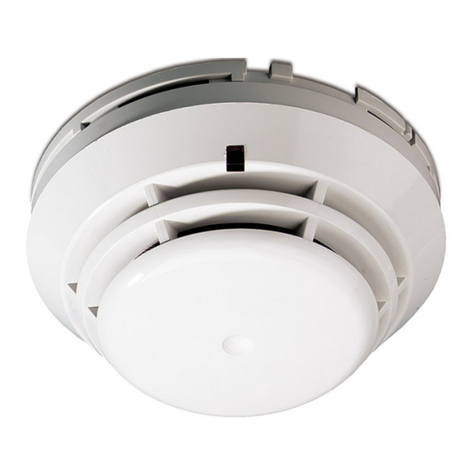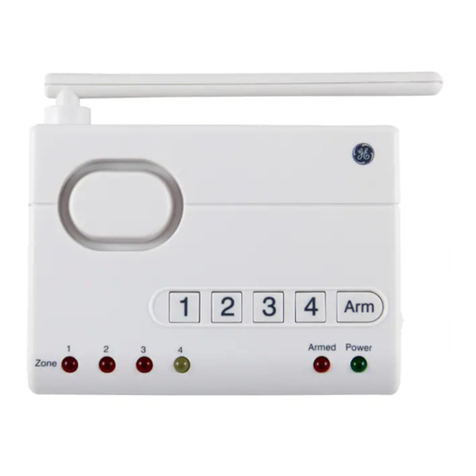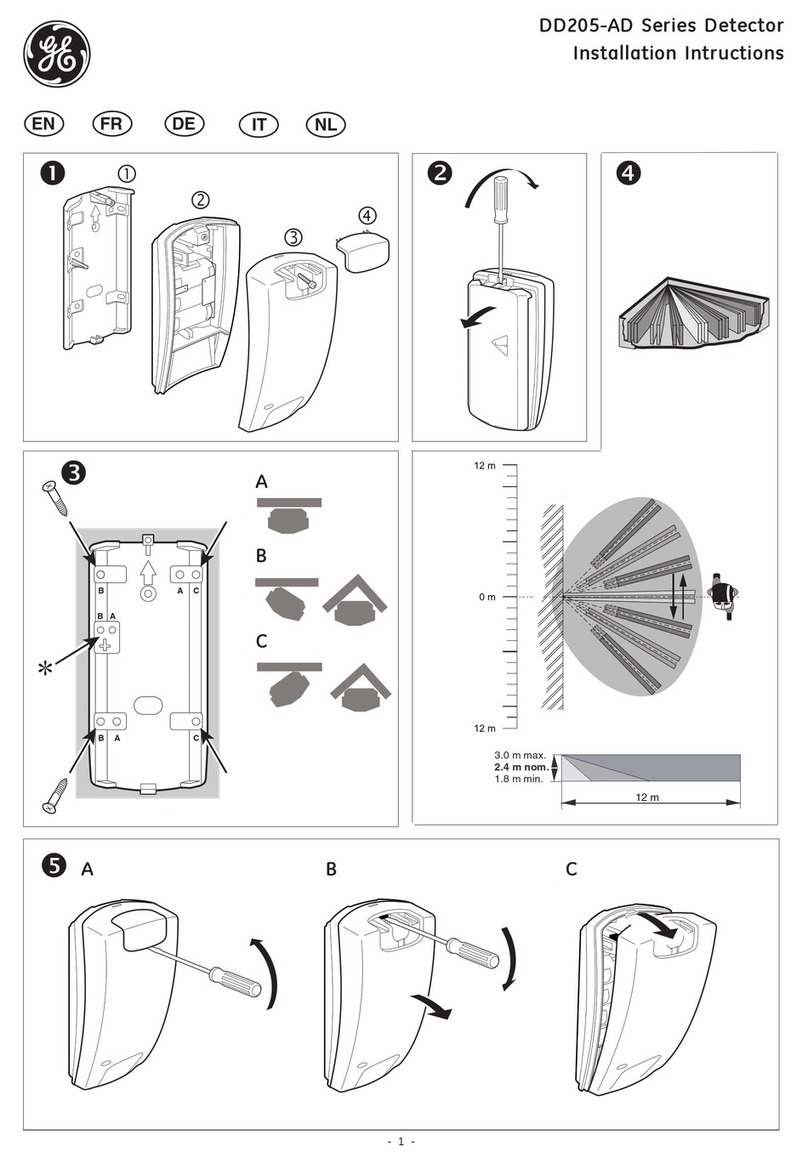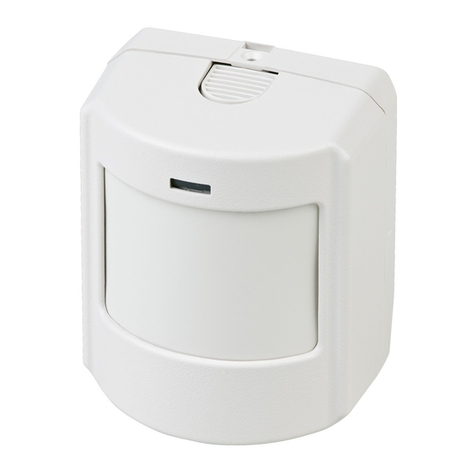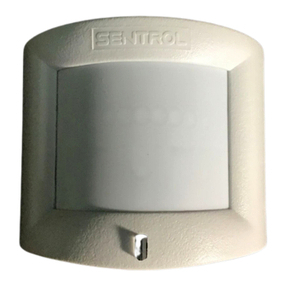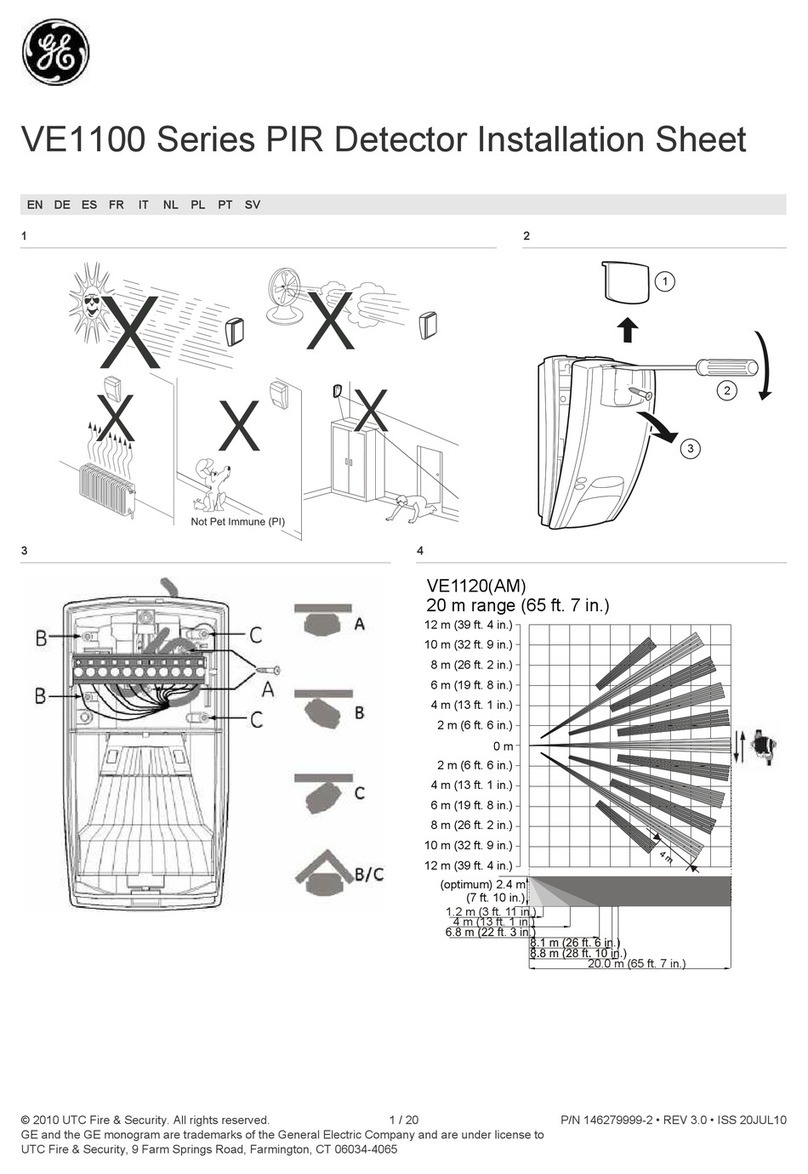
The detection LED (blue) flashes three times.
3. Wait approximately 2 to 3 minutes to allow the detector to
settle.
4. Press the programming button once to activate walk test
mode.
The detection LED is now enabled for five minutes.
Note: The front cover must be fitted when walk testing.
The default settings are:
• Range: 30 meters / 98 feet
• Pulse count: 1
• Detection LED: off
• AND logic: on
Mounting the unit
During installation, protect the electronics against water, as
trapped moisture can affect or damage the unit.
Note: Please leave minimum 10 cm (4 in.) clearance above the top
of the detector housing to allow the cover to be positioned
correctly.
To mount the detector:
1. Drill the wall to accept the two fixing screws, the cable entry,
and the tamper cup (if used). See Figures 1 and 3.
A hole-drilling template is provided.
Note: We recommend using the tamper cup on uneven wall
surfaces.
2. Remove the cover assembly by loosening the locking screw
using the hex wrench provided. Squeeze the sides of the front
cover to release the internal catches. The cover hinges from
the top and lifts out of the location slot. See Figure 2.
3. Use a razor knife to open a rubber seal to allow the cabling
into the unit (see Figure 4). Feed standard eight-core alarm
cable into the cable entry. Bare the wires and connect to the
top PCB terminal block (Figure 5, item 2).
4. Screw the unit to the wall ensuring that the tamper pin is
correctly located and that the tamper microswitch is closed.
To aid installation, two spare tamper feet are provided. One is
1 mm shorter and the other is 2 mm shorter than the tamper
foot originally fitted. The tamper foot is a push fit and can be
removed by carefully pulling it from the pin. See Figure 1.
5. When the detector is aligned, connected, and programmed to
suit the installation:
a. Fit the cover to the detector base.
b. Lightly screw the locking screw using the hex wrench.
c. Put the top of the locking tool into the small notch on
each side of the cover, and then apply slight pressure
until the cover locks into the base, as shown in Figure 17.
d. Tighten the locking screw.
Connecting the unit
DI601 / DDI602 includes jumpers that let you configure internal
end-of-line (EOL) resistor values, when EOL resistors are required.
Values are: 1, 2.2, 3.3, 4.7, 5.6, and 6.8 kΩ. Figure 5 shows:
1. EOL resistor jumpers
2. Wiring points
Alternatively, you can remove the jumpers and connect a discrete
resistor directly to the alarm or tamper outputs, as specified by
third-party equipment.
Table 1: Connections
Terminal Label Description
1, 2 ALARM N/C Alarm relay, normally closed
PIR output in OR mode
2, 3 EOL End-of-line resistors
3, 4 TAMPER N/C Tamper relay, normally closed
5, 6 ALARM N/O Alarm relay, normally open
Microwave output in OR mode
7, 8 +, −12V DC 12 Vpower supply
Multibeam alignment and masking
The multifunction lens fitted to DI601 / DDI602 detector produces
seven long-range beams and seven medium- to short-range
curtain PIR beams. The PIR circuitry detects changes in heat and
movement in the beam pattern; therefore items such as trees,
shrubs, ponds, boiler flues, and animals should be considered
when positioning the detector. The microwave module detects
actual movement towards or away from the detector and is
programmed to ignore any objects that move outside of the
preselected detection range.
Note: PIR sensor is more sensitive to a movement across the
beams, and less sensitive to a movement directly towards or away
from the beams. Microwave sensor is more sensitive to movement
towards and away from the sensor.
The detector module is fitted with two sliding shutters to reduce
the detection angle of the PIR sensor only.
The curtains are fitted to the pan and tilt module as shown in
Figure 6. Each section of the detector lens gives a coverage
pattern of approximately 10 degrees.
An additional set of curtain sliders is provided should the beam
pattern be narrowed even further, e.g. if the minimum detection
angle of 10 degrees is required.
When coverage exceeds the desired detection area, adjust the
module as required and mask off any beams, either vertically or
horizontally, to avoid unwanted detection.
Use portions of the self-adhesive silver mask applied to the rear,
smooth side of the lens as shown in Figures 9 to 12. Gently lift the
top and bottom edges of the pan and tilt module to release the
lens. To replace the module, please begin by sliding one side of the
lens into the clips on the pan and tilt module. After one side is
secure, do the same for the opposite side. Once both sides are
secure, gently lift the top and bottom edges of the pan and tilt
module and press on the lens to click it into place.
Always replace the lens the correct way up to ensure exact beam
pattern coverage. The top of the lens is marked TOP as shown in
Figure 7.
Table 2 below summarizes typical masking configurations for use
when the range option is set to 30 meters.
Table 2: Masking configurations for maximum range
Configuration Height
(m / ft.)
Tilt (°) Max. range
(m / ft.)
Reference
Multibeam, optimum 3 / 10 0 30 / 98 Figure 9
Multibeam 6 / 20 9 25 / 82 Figure 10
P/N 1069153 / 1069154 • REV 00.09 • ISS 18DEC09 5 of 8
